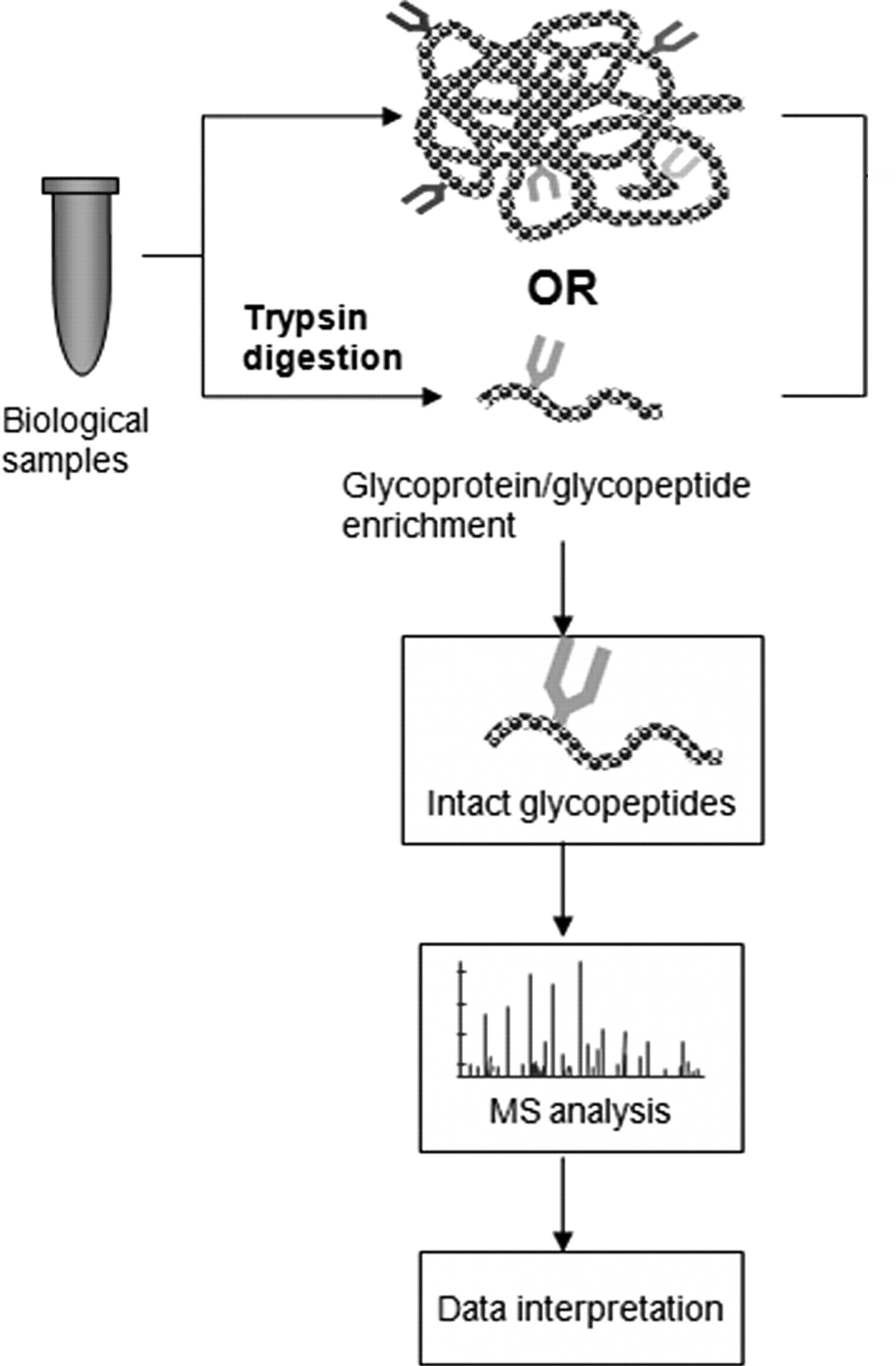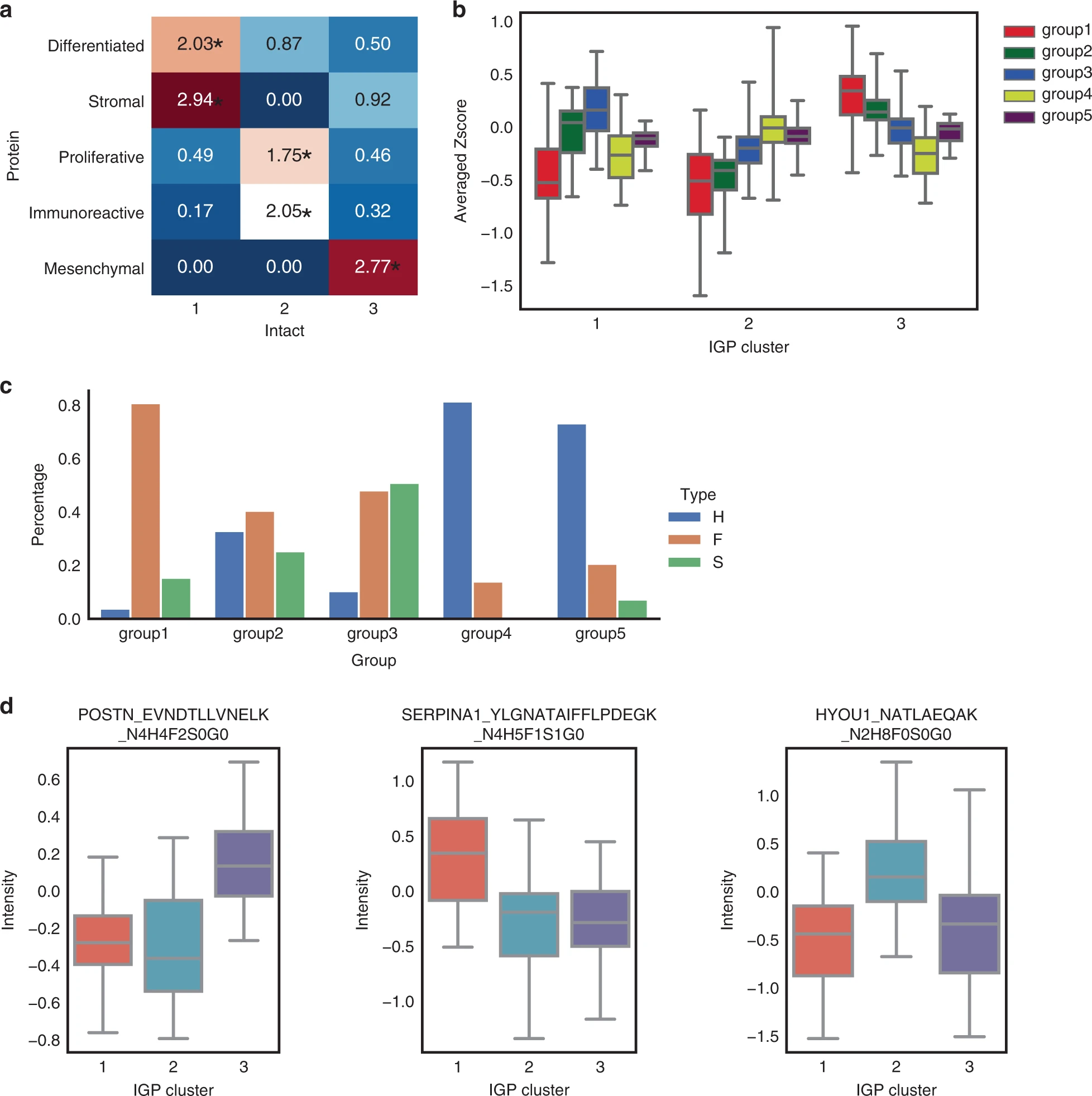Glycoproteome Analysis Service
Glycoproteome analysis aims to systematically study and analyze all glycosylated proteins in the sample. In addition to qualitative and quantitative analysis of the glycosylated proteins themselves, it also includes analysis of the glycosylation modification type, modification site, modification abundance, and sugar chain structure on the protein. Glycosylation modification plays a role in specific biological processes such as cell communication, molecular recognition, and signal transduction by affecting the structure and function of proteins. Glycoproteome analysis service can be used to reveal the specific molecular mechanisms of glycosylation modification in these biological processes. Relying on chromatography and mass spectrometry technology, MtoZ Biolabs provides glycoproteome analysis service that can perform qualitative and quantitative analysis of the glycoproteome to help your basic scientific research or product development.
Analysis Workflow

Pan S. et al. Molecular & Cellular Proteomics. 2011.
Sample Preparation
Appropriate methods are chosen for protein extraction based on the sample type.
Enzymatic Digestion and Glycopeptide Enrichment
Proteins are digested using enzymes such as trypsin. Glycopeptide enrichment is performed using Lectin affinity enrichment, HILIC enrichment, or other specific glycopeptide enrichment methods.
Mass Spectrometry Detection
Peptide separation and high-throughput detection are carried out using a high-resolution liquid chromatography-tandem mass spectrometry (LC-MS/MS) platform.
Data Analysis
Identification of glycoforms and glycosylation sites, screening and enrichment analysis of differentially expressed glycoproteins/glycopeptides, and functional enrichment analysis (GO/KEGG/GlyCAN, etc.) were performed.
Service Advantages
1. Advanced Analysis Platform: MtoZ Biolabs established an advanced glycoproteome analysis platform, guaranteeing reliable, fast, and highly accurate analysis service.
2. One-Time-Charge: Our pricing is transparent, no hidden fees or additional costs.
3. High-Data-Quality: Deep data coverage with strict data quality control. AI-powered bioinformatics platform integrates all glycoproteome analysis service data, providing clients with a comprehensive data report.
Applications
Glycoproteome analysis service can be applied to a variety of research, such as:
1. Basic life science research
Glycoproteome analysis service can be used to study the effects of glycosylation modification on protein stability and binding affinity to further understand cell signaling pathways and functional networks.
2. Biomarker screening
Using glycoproteome quantitative analysis, patient subgroups that are more sensitive to different treatment options or drugs can be found, providing support for precision medicine.
3. Drug development and target validation
By analyzing key glycosylation epitopes, antibody drug performance can be optimized or new vaccines can be developed.
4. Biologics quality control
For example, in the production of recombinant protein drugs, monitoring glycosylation modification is crucial to ensure the safety and efficacy of the preparation.
FAQ
Q. In the mass spectrometry analysis, how to effectively distinguish isomeric sugar chains (isomers) and determine their connection methods?
Distinguishing sugar chain isomers in mass spectrometric detection requires a combination of the following strategies:
1. Specific glycosidase digestion
Use specific glycosidases to enzymatically hydrolyze the glycopeptides, and then compare the structural changes of the sugar chains through mass spectrometry analysis to infer the connection method. This method is highly specific, but is limited by enzyme availability and digestion efficiency.
2. Chemical derivatization method
Using chemical derivatization methods (such as methylation methods and fluorescent labeling methods) to derivatize sugar chains can significantly improve the hydrophilicity and mass spectrometry response signals of sugar chains, thereby enhancing the resolution of isomeric sugar chains.
3. Combining tandem mass spectrometry (MS/MS) with multiple dissociation modes
Combining multiple ion dissociation modes allows more structural information to be obtained in fragment ions. For example, CID helps identify the sugar chain skeleton, while ETD helps retain peptide information. In addition, mass spectrometry imaging techniques (such as MALDI-IMS) can also help visualize the spatial distribution of different glycoforms.
4. Liquid chromatography separation technology
Separating sugar chains in conjunction with high-performance liquid chromatography before mass spectrometry analysis can help separate isomeric sugar chains and obtain clearer results in mass spectrometry.
5. Combining databases and bioinformatics tools
Combined with specialized glycosylation databases (such as GlycoMod, GlyTouCan) and advanced bioinformatics analysis tools, it can assist in the identification of sugar chain isomers and further improve the accuracy of analysis.
It is difficult to completely solve the problem of sugar chain isomerism with a single method. The most effective strategy is to combine multiple methods such as glycosidase digestion, chemical derivatization, tandem mass spectrometry and liquid chromatography separation, supplemented by database and bioinformatics analysis.
Case Study
By performing glycoproteomic analysis on high-grade serous ovarian cancer (HGSC) samples, this study revealed the specific distribution pattern of glycosylation modifications in different tumor subtypes and found that glycosylation features were closely related to the clinical prognosis of patients.

Pan J. et al. Nature Communications. 2020.
MtoZ Biolabs, an integrated chromatography and mass spectrometry (MS) services provider.
Related Services
How to order?







